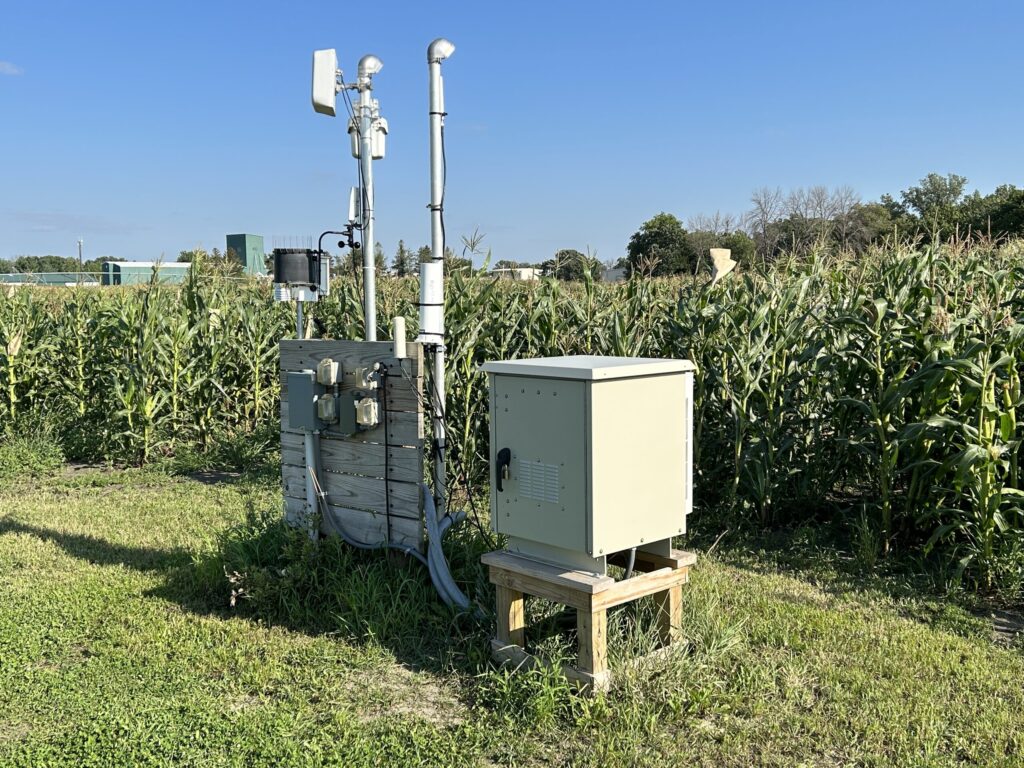The PAWR test network integrated a local, open-source mobile core with an Ericsson 5G SA RAN
The federally funded Platforms for Advanced Wireless Research (PAWR)’s testbed in Iowa is dabbling in the exploration of open-source mobile network software. It recently migrated from a remotely hosted Ericsson core to a local, open-source mobile core combined with an Ericsson 5G Standalone Radio Access Network (RAN).
ARA previously used an Ericsson core hosted in California for its Ericsson RAN, which includes four base stations operating at 3.4 GHz. As of March 2025, the Ericsson sites were transitioned to using a local, open-source mobile core that relies on the Open5GS software stack.
The one-of-a-kind deployment for the ARA testbed did result in lower overall throughput—but not by much, according to PAWR. Measurements showed that the Ericsson RAN + core set-up delivered throughput of 557.49 Mbps, and the combination of the Open5GS core + Ericsson 5G RAN delivered throughput of 445.56 Mbps—which, PAWR noted, is “still well above the threshold needed to support enhanced mobile broadband (eMBB) applications.” Meanwhile, the switch from a core hosted in California to a core hosted in a nearby data center in Ames, Iowa, also improved latency in the network control plane.
The Agriculture and Rural Communities, or ARA, testbed in central Iowa was announced in 2021 and become operational in the fall of 2023. ARA, the fourth and only rural testbed for the PAWR program, focuses on new strategies and technologies for expanding rural broadband, and uniquely rural applications for advanced wireless technologies. It is a multi-modal testbed that combines both commercial and experimental network systems for connectivity research, including non-commercial, open-source RAN elements.

“This is a significant step toward proving the commercial readiness and interoperability of open source mobile networking software,” said Dr. Hongwei Zhang, who leads the ARA testbed and is head of the Center for Wireless, Communities and Innovation (WiCI) at Iowa State University. “The new network integration gives us the opportunity to combine programmable flexibility in the core with robustness in the RAN. We are actively leveraging the deployment to support 5G applications at local research farms including the remote operation of sensor-equipped robots and video monitoring of livestock.”
“ARA’s new open source 5G deployment represents exactly the kind of bold innovation that NSF envisioned when launching the PAWR program,” said Dr. Ellen Zegura, acting Assistant Director of computer and information science and engineering at the National Science Foundation, which funds PAWR. “By pairing open and flexible software with commercial-grade wireless infrastructure, ARA is accelerating the development of future wireless technologies while reinforcing America’s position as a global leader in advanced communications. This work directly supports national infrastructure priorities by enabling hands-on research that will shape the next generation of wireless networks—critical for agriculture, manufacturing, and national defense.”
In other test news:
-Among the news coming out ahead of the IMS conference, radio frequency (RF) and microwave component maker Quantic XMicrowave announced that it has collaborated with Nuvotronics to integrate the latter company’s RF passive components—including high-performance couplers, band pass filters and die carriers—with Quantic X-Microwave X-Mwblocks system for modular design.
Also at IMS, Mathworks will be touting its MATLAB and Simulink solutions for RF system design, integrated sensing and communications (ISAC) and measuring and modeling RF filters.
–Keysight Technologies and Synopsys introduced a new RF design migration flow with a boost from artificial intelligence. The two companies said that the solution aims to make it quicker and easier for engineers to migrate designs from TSMC’s N6RF+ process to its N4P technology, part of TSMC’s 5 nm processes. The new tool builds on TSMC’s Analog Design Migration (ADM) methodology, and integrates RF solutions from Keysight plus RF migration solution from Synopsys which use AI, to “streamline the redesign of passive devices and design components to TSMC’s more advanced RF process rules.”
“Analog design migration is a challenging and time-intensive process requiring significant trial and error,” said Sanjay Bali, SVP of Strategy and Product Management at Synopsys. “Our deep collaboration with Keysight Technologies and TSMC enables design teams to boost their productivity with an AI-powered RF design migration flow to accelerate the redesign process and deliver RF designs more efficiently, while achieving the best PPA (Power, Performance, and Area) on TSMC’s advanced nodes.”
–Ralliant, the new precision tech and test-focused spin-off from Fortive that includes test brands Fluke and Tektronix, will hold its first investors day today, ahead of its planned split from Fortive on June 28. Presentations from the new company’s executives will include CEO Tami Newcombe and CFO Neill Reynolds, as well as presentations from Chris Bohn, the president of Tektronix; Andrew McCauley, president of Sensor Systems; and Corey Christmann, president of PacSci EMC.

